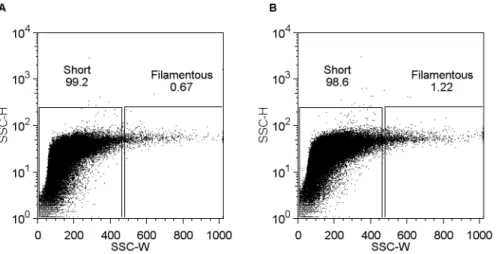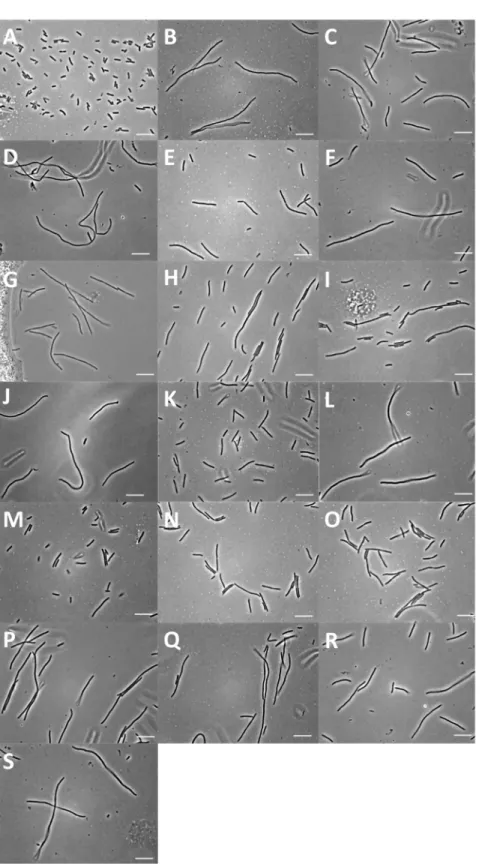Harnessing single cell sorting to identify cell division genes and regulators in bacteria.
Texto
Imagem




Documentos relacionados
A , Representative MMP-1-positive esophageal squamous cell carcinoma showing staining mainly on the cell membranes and/ or in the cytoplasm of tumor cells (arrows); B ,
coli DH5 a resulted in RecA protein expression and development of the selective fl uoroquinolone resistance phenotype in the E. coli
Slp is a multifunctional septal protein which has a C-terminal domain with DNA translocase activity, and N-terminal and linker domains that perform a second function,
Second, the FBL17 loss-of-function mutants arrest germ cell division leading to a single sperm cell phenotype that closely resembles (see also below) the phenotype found in mutants
Analysis of cell cycle distribution and apoptosis in melanoma cells overexpressing NOP14 showed that NOP14 overexpression induced cell cycle arrest at the G1 phase and
Figure 17 - LDH enzymatic activity in human prostate PNT1A epithelial cells after exposure to 20 μg/mL of saco (July crop) cherry for 72 hours, determined by spectrophotometric
As shown in Figure 3A, expression of markers related to the mesenchymal phenotype, such as markers of cell migration and smooth muscle cell differentiation, was higher in the cells
Figure 2. Matrigel-mediated induction of self-assembled cell networks by UCBMSCs. A ) Representative images of cell networks generated by both control and EGM-2-induced UCBMSCs during
